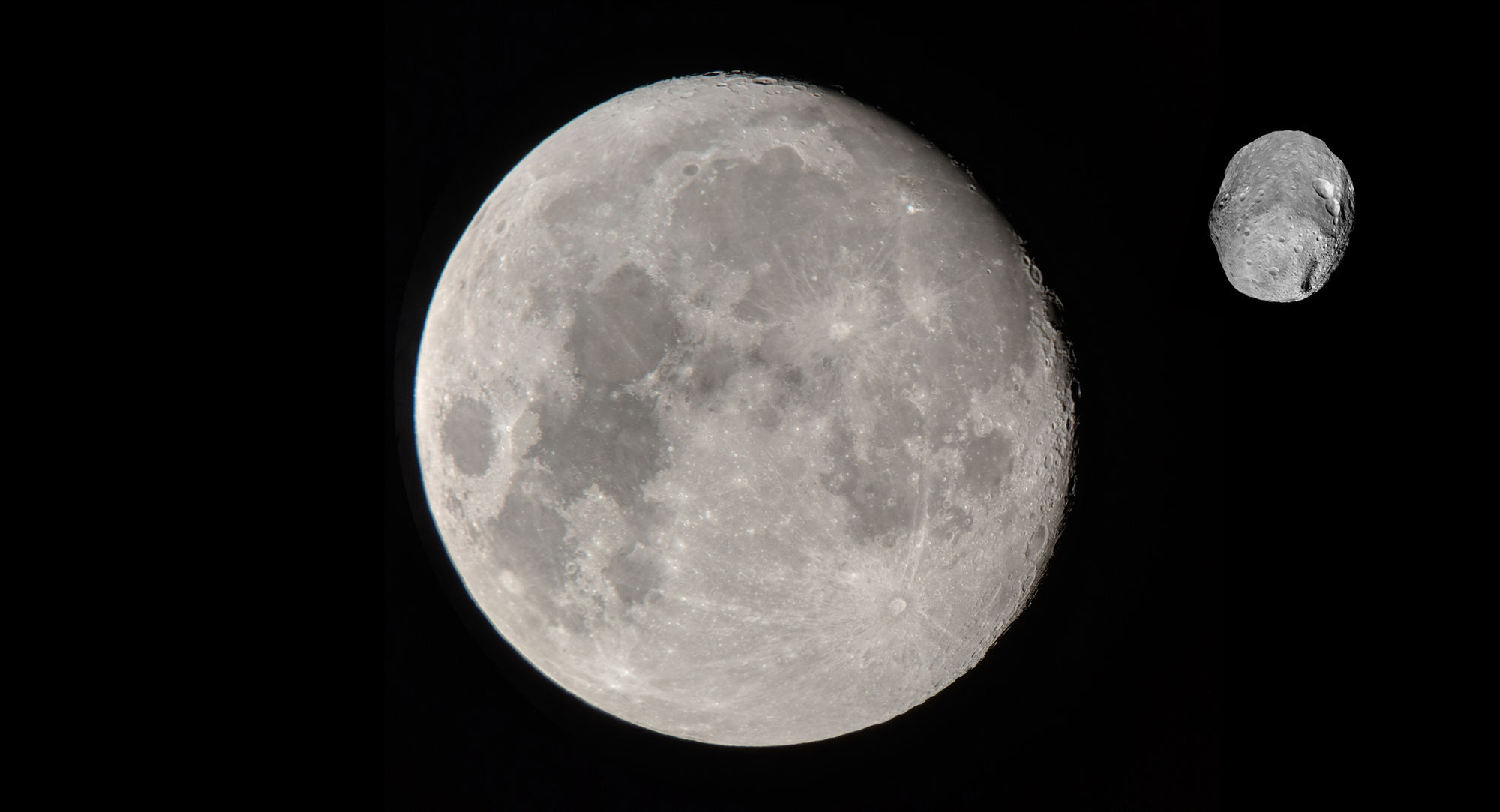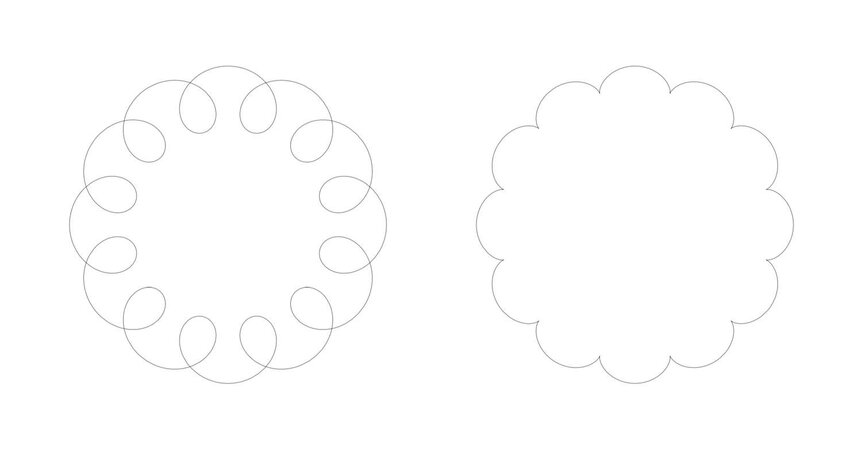Create a free profile to get unlimited access to exclusive videos, sweepstakes, and more!
The Moon that went up a Hill but came down a planet

Edited to add: I have taken the topic of this post and logically continued it in a post about Pluto.
Every now and again I get an email from someone who tries to tell me that the moon orbits the Sun more than it orbits the Earth.
On the face of it, their claim appears to hold water. For example, they'll say that if you compare the orbital velocity of the Moon around the Earth (about 1 km/sec) to the orbital velocity of the Moon around the Sun (the same as the Earth's velocity around the Sun, about 30 km/sec), you'll see that the Moon's orbit is always convex to the Sun; in other words, it doesn't make a loopy pattern around the Sun, as you might expect:
That diagram is exaggerated; on that scale the Moon's combined path around the Earth and Sun would look pretty much like a circle (and to be clear, the link above doesn't make the claim that the Moon orbits the Sun more than it does the Earth, it's just pointing out the patterns).
Moreover, if you calculate the force of the Sun's gravity on the Moon, you find it's more than twice the force of Earth's gravity on the Moon!
Whoa. So does the Moon orbit the Earth, or the Sun?
Turns out, it orbits the Earth, despite these claims. The above claims are true, but are not important in this argument. Instead, you have to look at something called the Hill sphere. Basically, it's the volume of space around an object where the gravity of that object dominates over the gravity of a more massive but distant object around which the first object orbits.
OK, in English -- and more pertinent to this issue -- it's the volume of space around the Earth where the Earth's gravity is more important than the Sun's. If something is orbiting the Earth inside Earth's Hill sphere, it'll be a satellite of the Earth and not the Sun.
The derivation of the math isn't terribly important here (and it's on the Wikipedia page if you're curious), but when you plug in the numbers, you find the Earth's Hill sphere has a radius of about 1.5 million kilometers. The Moon's orbital radius of 400,000 km keeps it well within the Earth's Hill sphere, so there you have it. The Moon orbits the Earth more than it orbits the Sun. In reality it does both, and saying it orbits one and not the other is silly anyway.
But what about those other claims? Well, the orbital shape is pretty meaningless for this argument. You'll get that always-convex pattern for any moon that orbits a planet far enough out compared to the planet's distance from the Sun. But as long as that moon is inside the planet's Hill sphere, it orbits the planet more than the Sun.
And the fact that the Sun's force effect of gravity on the Moon is stronger than the Earth's is interesting, but not relevant. Why not? Because the Sun is pulling on both the Earth and the Moon! Since both the Earth and Moon are roughly the same distance from the Sun (the Sun is 400 times farther away from us than the Moon is), the force acceleration due to the Sun's gravity on the Moon and the Earth is about the same. That means the Sun's gravity is important in keeping the Earth and Moon together orbiting the Sun, but doesn't affect the Earth and Moon as a system. The Moon is still gravitationally bound to the Earth.
Think of it this way: if the Sun were to disappear, the Moon would still orbit the Earth pretty much as it does now. That means the Sun's gravity doesn't affect the Earth/Moon system much. On the flip side, if the Earth disappeared, the Moon would continue to orbit the Sun as well. That means the Earth's gravity doesn't much affect the Moon's orbit around the Sun, either.
Now, if we moved the Earth/Moon system closer to the Sun, then this all starts to matter. That's because eventually you get to a point where the size of the Moon's orbit gets to be significant compared to the size of the Earth's orbit around the Sun. In that case, as the Moon orbits the Earth, when its closest to the Sun, the gravity of the Sun gets significant compared to the Sun's gravity on the Earth (remember, right now that force effect is about the same). But that's exactly how the Hill sphere idea works!
It turns out that if you moved the Earth and Moon to about 40 million km from the Sun -- closer to the Sun than Mercury! -- then the Hill sphere of the Earth would be 400,000 km, equal to the moon's distance from the Earth now. That means the Moon could be stripped from the Earth by the Sun, and so then you could say the Moon orbits the Sun and not the Earth.
But out here, 150 million kilometers from the Sun, the Moon orbits the Earth quite nicely, thank you very much. You can keep your convex orbits and your forces and everything else, and examine them as matters of interest. But the Moon will keep pacing out its orbit just the same, and it'll keep doing it that way for a long, long time.
The orbital diagrams in this post are from a paper by Helmer Aslaksen, which is an interesting read, and has an excellent description of the Moon's orbital shape. Oh, and stay tuned, because I have another thing to say about all this in a later post...
Edited to add: in a couple of places I used the word "force" when I mean "acceleration". I fixed that, or used the word "effect". This may seem like a nitpick, but in fact they mean different things physically, and therefore their magnitudes, the sizes of their effects, changes. That's what I get for writing this at 4 in the morning.



























